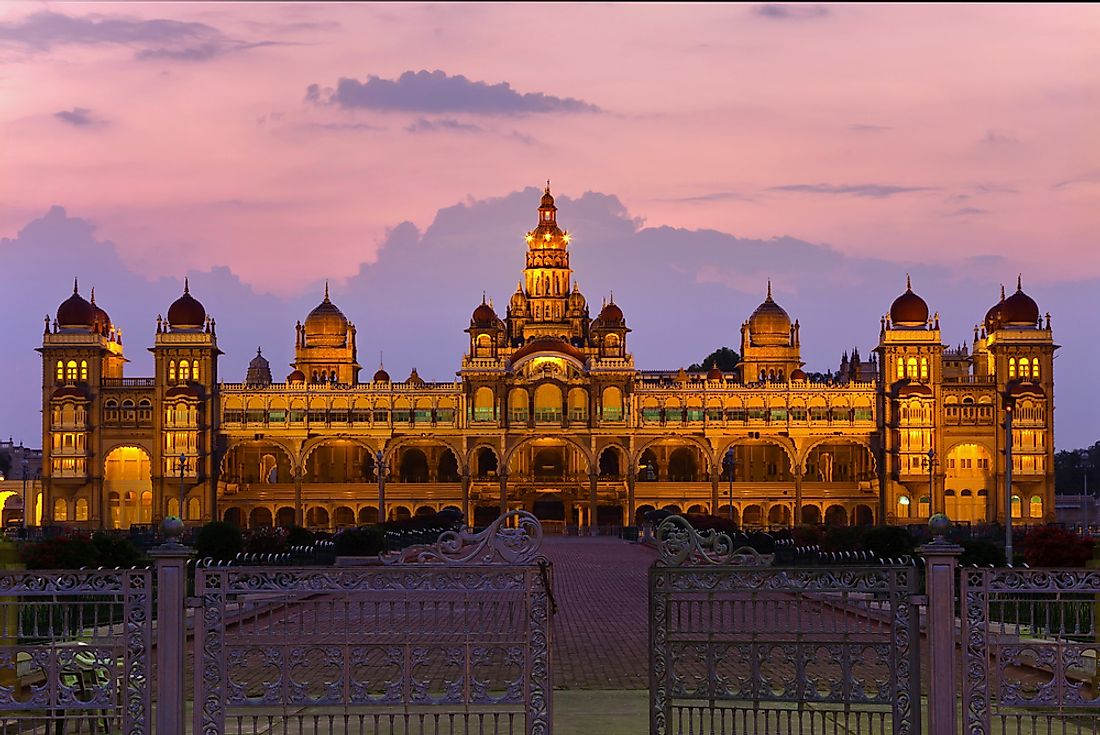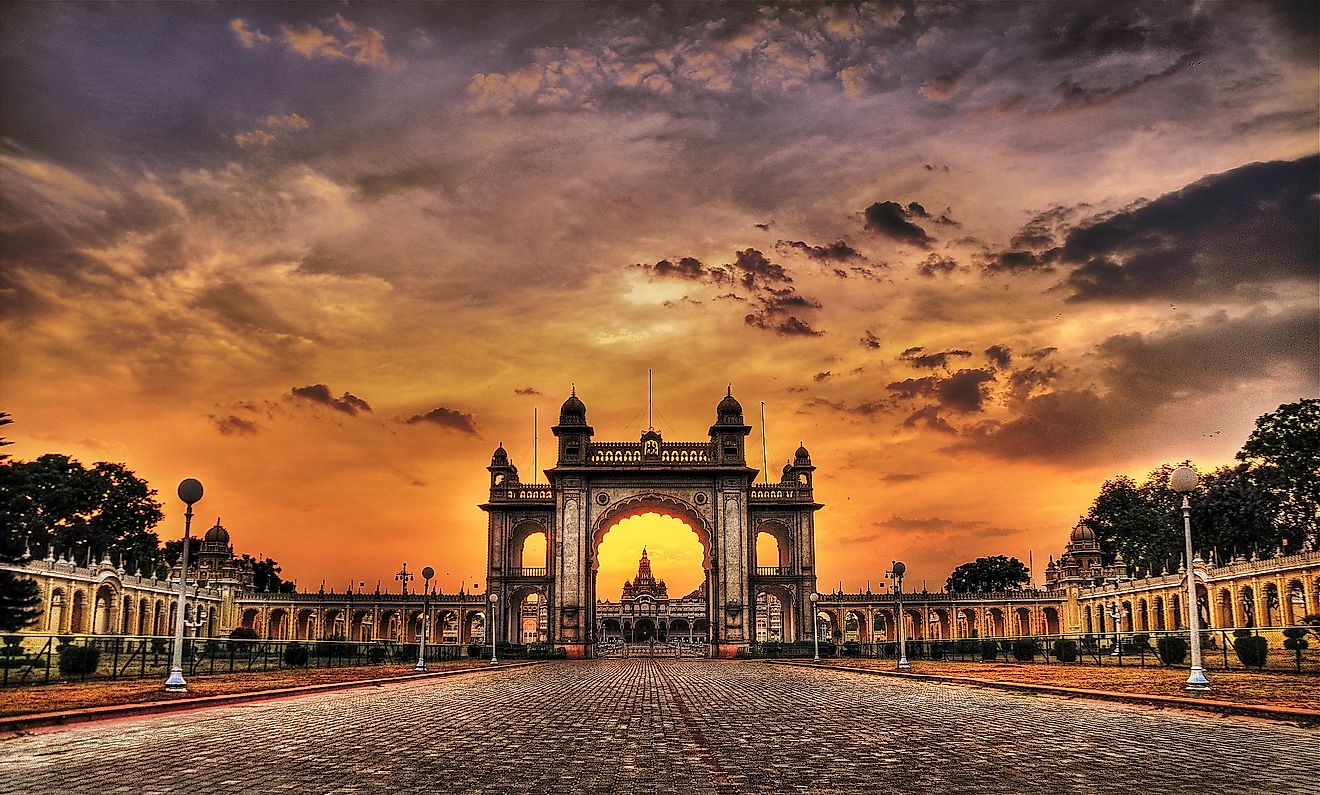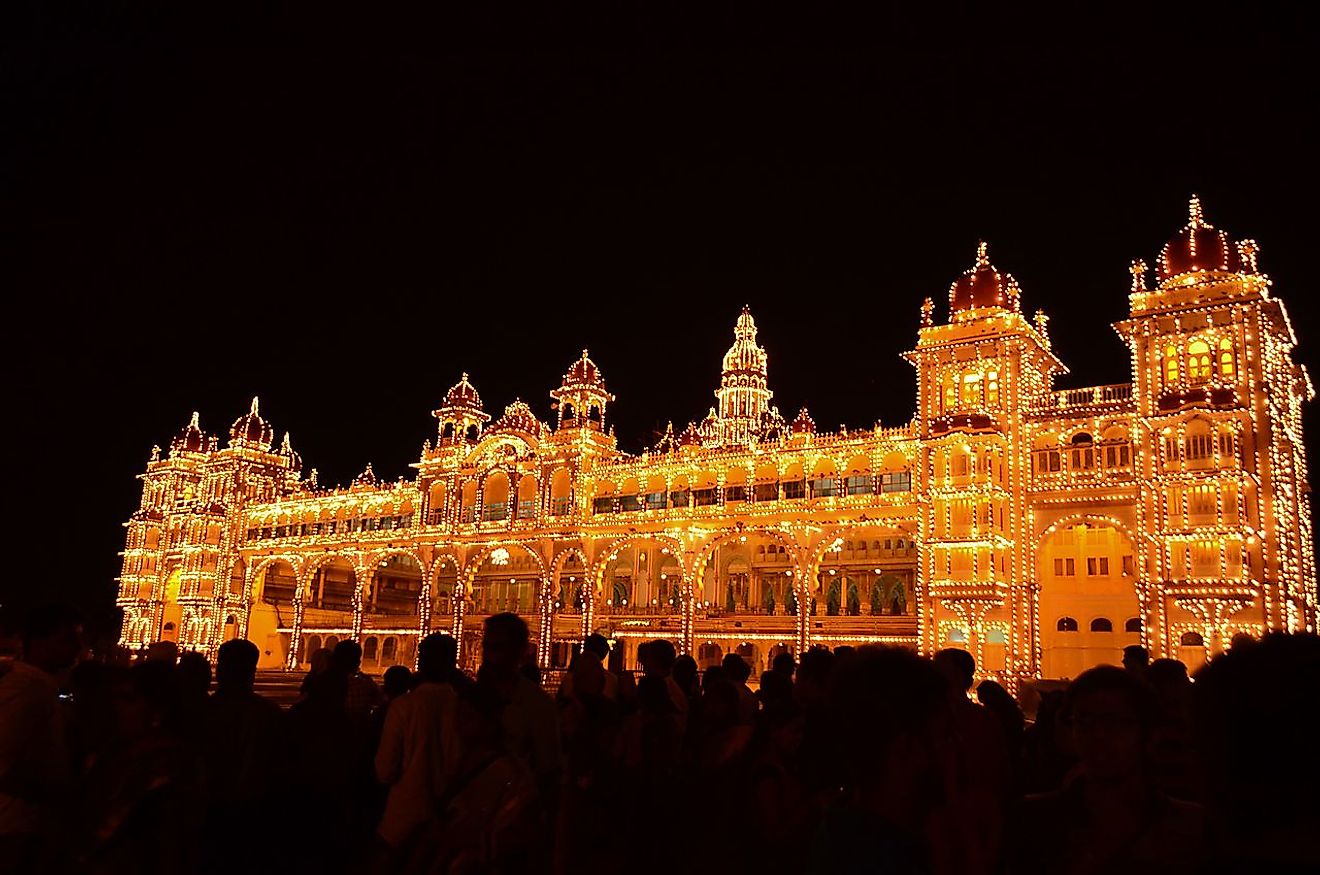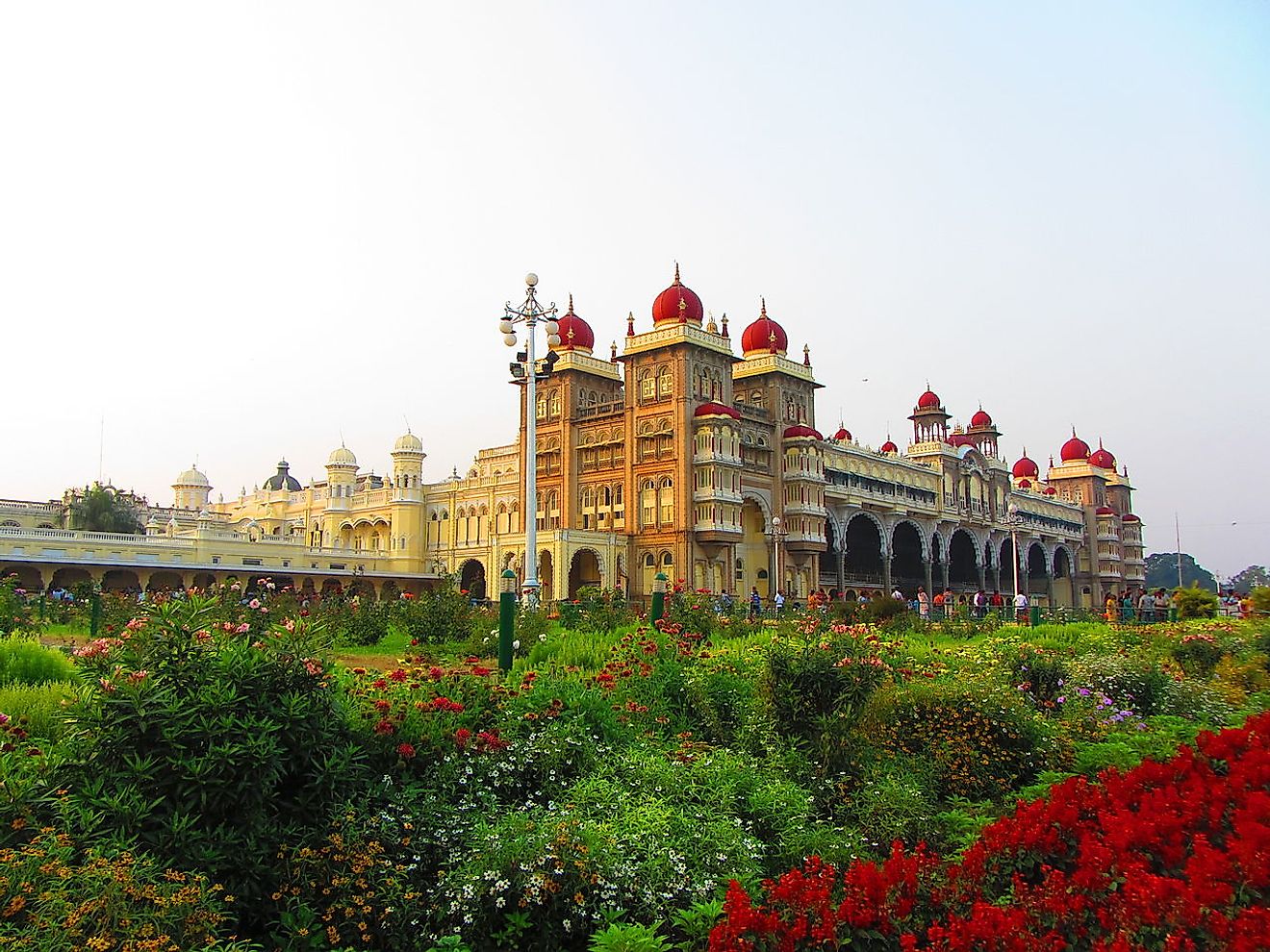The Historical Mysore Palace of Karnataka, India

Mysore Palace is a palatial structure which is one of the most visited attractions in India constructed between 1897 and 1912. Rajmata Pramoda Devi Wadiyar owns the palace. However, the Government of Karnataka is the current tenant. The palace is the official seat and residence of the Mysore royal family known as the Wodeyers. The royal family ruled the Indian state for several centuries. Currently, the palace receives about 6 million visitors annually. English Architect Henry Irwin designed the building, and it is a three-storeyed colossal building that has a flawless combination of Muslim, Gothic, Rajput, and Hindu architectural styles.
5. Location and Historical Background
Located in the southern region of India, Karnataka is the historical Palace of Mysore. The palace is the official seat and residence of the Mysore royal family known as the Wodeyers. The royal family ruled the Indian state between the years of 1399 and 1950. The Mysore Palace features several buildings, courtyards, gardens and two durbar halls used for the sole purpose of ceremonial meetings. The palace is centrally located, facing eastward to the Chamundi Hills. Popularly described as the City of Palaces, Mysore features seven palaces including the Mysore Palace. The name Mysore Palace is accredited to the one found within the Old Fort. Mysore Palace was built by Maharaja Rajarshi. With over six million visitors per year, the palace is India's most popular tourist attraction behind the Taj Mahal.
4. Unique Architecture

The Mysore Palace was built in the Indo-Saracenic style which is a blend of the Gothic, Muslim, Rajput, and Hindu styles. The architecture features 145 feet high tower with five stories and a three stone structure which has marble domes. The palace was built using fine gray granite and features lovely domes made of deep pink colored marbles. Mysore Palace is encompassed by a great garden. The kingdom of Mysore's coat of arms and emblem are held by the entrance gate and arch and the kingdom's motto which reads 'never be terrified' in Sanskrit is inscribed. The palace also features three entrances and plenty of secret tunnels from the cellar in the palace leading to other palaces, Srirangapatna, and confidential areas.
3. Nature, Sights, and Sounds

A sculptor depicting the goddess of prosperity, wealth and good luck known as "Gajalakshmi" is erected atop the central arch. The goddess is also acknowledged for abundance with her elephants. The palace comprises of several unique rooms such as the Ambavilasa which was a room used for private audiences by the King. The Gombe Thotti was also known as Doll's Pavillion which a gallery featuring traditional dolls dating back to the 19th and 20th centuries. The room also features European and Indian ceremonial objects and sculptures. The marriage hall is also known as Kalyana Mantapa. Mysore Palace also consists of 12 Hindu temples most of which were built during the 14th century. There are light and sound programs arranged within the palace.
2. Modern Significance and Tourism
The Mysore Palace is a major tourist attraction in India. However, photography within the main palace complex is prohibited by the authorities. The palace's Old Fort is opened from 10 AM to 8 PM, and entry is free whereas the entry to the palace buildings takes place under tight security from 11 AM to 3 PM. Entry fee to the palace is free for children aged seven and below, children aged between seven and twelve years pay 25 rupees per head and adults are charged 40 rupees. However, for foreign tourists, a fee of 200 rupees is charged. For people to enter the palace, they are recommended to remove their footwear.
1. Threats to the Property and Conservation Efforts

At present, a significant portion of Mysore Palace is under the management of the Karnataka Government. The palace was procured following the passing of the Mysore Palace Acquisition Act. Princess Pramodadevi Wadiyar, a member of the royal family, only possesses a small part of the palace located towards the West Gate. The Karnataka High Court had already reached a verdict declaring the late Prince Srikantadatta Narasimharaja Wadiyar as the rightful owner of the palace. However, the case regarding ownership of the Mysore Palace is still pending following the Karnataka Government's appeal to the Supreme Court.







